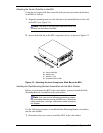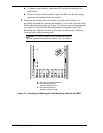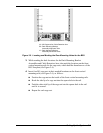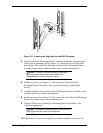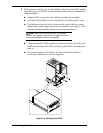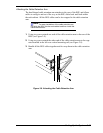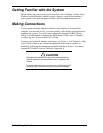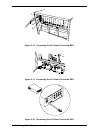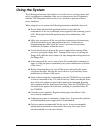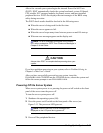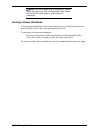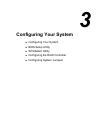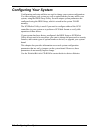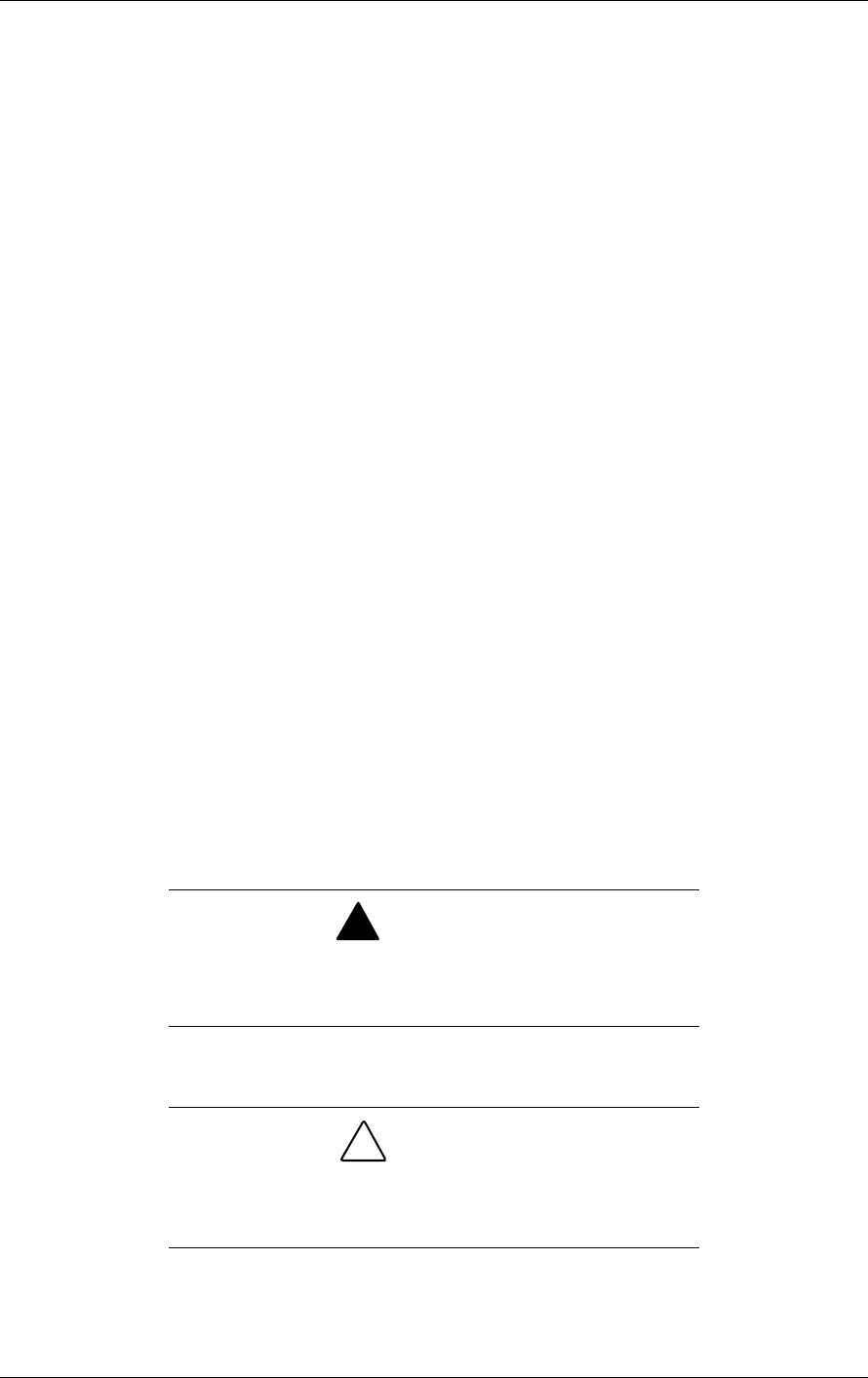
Setting Up the System 2-15
Connecting the Power Cord(s)
Plug the female end of each AC power cord into the input receptacle(s) on the
rear of the BSU chassis (see Figure 2-10) and the DEU (see Figure 2-11). Plug
the male end of the power cord into NEMA 5-15R outlet for 100-120 VAC or
NEMA 6-15R outlet for 200-240 VAC or optional UPS. The Uninterruptible
Power Source (UPS) has a 30 amp plug that requires a special outlet (see Figure
2-12) to be plugged into a 100-120 VAC outlet.
If the power cord(s) supplied with the system are not compatible with the AC
wall outlet in your region, obtain a suitable power cord that meets the following
criteria.
!
The power cord must be rated for the available AC voltage and have a
current rating that is at least 125% of the current rating of the system.
!
The power cord connector that plugs into the wall outlet must be
terminated in a grounding-type male plug designed for use in your region.
It must have certification marks showing certification by an agency
acceptable in your region.
!
The power cord connector that plugs into the system must be an IEC-
type CEE-22 female connector.
!
The power cord must be less than 1.8 meters (6.0 feet) long.
After the power cord is plugged in confirm that the power status lamp on the
power unit flashes. If the lamp is off, a failure occurred in the power unit, see
Table 1-3 System Status LED Indicators in Chapter 1 of this User's Guide.
When connecting the power cord to a power control unit, such as an UPS
confirm that the power control unit is powered off. Connecting the power cord
while power is supplied to the power control unit may cause a failure.
!
WARNING
Your system shipped with a power cord for each power
supply. Do not attempt to modify or use the supplied AC
power cord if it is not the exact type required.
!
CAUTION
When two or three power supplies are installed in the
system the power plug from each of the power supplies must
be plugged into the same common ground power outlets.



